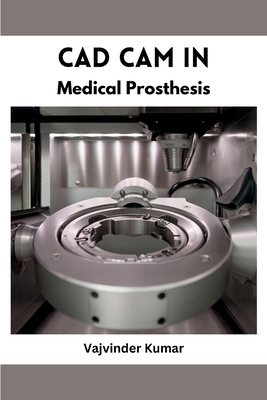You are here
Back to topCAD CAM in Medical Prosthesis (Paperback)
Description
CAD (Computer-Aided Design) and CAM (Computer-Aided Manufacturing) are technologies used in various industries, including the field of medical prosthetics. These technologies play a crucial role in designing and producing high-quality, customized medical prostheses for individuals with limb loss or other physical impairments. Here's how CAD/CAM is applied in the creation of medical prostheses:
CAD in Medical Prosthesis:
CAD involves creating digital models and designs using specialized software. In the context of medical prosthetics, CAD is used to design and visualize prosthetic devices based on the patient's anatomy and specific needs. Here's how CAD is applied:
Patient-Specific Design: CAD software allows prosthetists (professionals who design and fit prostheses) to create patient-specific designs. They can input the patient's measurements and anatomical data to develop a prosthetic limb that fits and functions optimally for that individual.
Customization: CAD enables prosthetists to customize the shape, size, and features of the prosthetic limb. This can be particularly important for prostheses that need to mimic the natural appearance and movement of body parts.
Virtual Prototyping: CAD models can be used to create virtual prototypes of prostheses. This allows for design iterations and modifications before moving to the manufacturing phase, reducing the chances of errors or discomfort for the patient.
CAM in Medical Prosthesis:
CAM involves the use of software and machinery to automate the manufacturing process based on the CAD designs. In the context of medical prosthetics, CAM is used to produce the physical prosthetic device from the digital design. Here's how CAM is applied:
Computer-Controlled Manufacturing: CAM software takes the CAD model and generates toolpaths for manufacturing machines, such as 3D printers or CNC milling machines. These machines follow the programmed instructions to create the physical prosthetic device.
3D Printing: Additive manufacturing, often referred to as 3D printing, is a common CAM technique used in prosthetics. It allows for precise layer-by-layer construction of complex prosthetic designs using materials like plastics, metals, or composites.
CNC Machining: Computer Numerical Control (CNC) machines can be used to carve prosthetic components from blocks of materials. This is often used for creating prosthetic sockets and other components that require high precision.
The integration of CAD and CAM technologies in the field of medical prosthetics has led to more accurate, efficient, and patient-specific designs. It enables prosthetists to create functional and comfortable prosthetic devices that significantly improve the quality of life for individuals with limb loss or mobility impairments.
